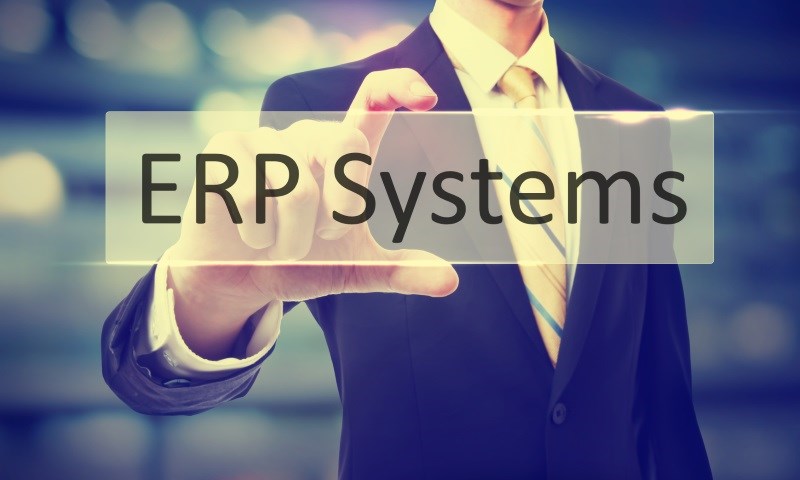
What is an ERP system?
Definitions might vary greatly!
Technically, an ERP system is a centralized software managing the whole process of a company. From sales to accounting to manufacturing, everyone logs in the exact same system and sees the same data. But in reality, the definition is often much wider than that.
A little story…
I remember my first day at a client a while ago…
In that single day, I’ve noticed 3 employees coming to the IT with questions on the ‘ERP’. The thing is, each one had a different role and they all talked about a different system!
Since they hired me to help them implement their ERP, no need to say the first thing I did the second day was to clarify what they really needed help with! (I was happy to hear that they actually needed help to implement a system that covered most of their business processes!)
But why would each employee talk about a different ‘ERP’?
Between what is really an ERP and what you hear in the business world is often quite different. Employees or managers will often refer to the
main management system they are personally using in their department. So for them, the ERP is simply their management software, whether it is really an ERP or not.
A system in a manufacturing company might only be that: a manufacturing management software. So in that case, what would be an ERP? Let’s not be too picky and let’s just say that, for a manufacturing company, an ERP would be a system that covers sales, supply management, manufacturing & warehouse and usually accounting & HR.
In my own opinion, to really talk about an ERP – and to get the benefits of such a system – it must at least manage the sales and supply chain, the core business – manufacturing, logistics, etc. – and hopefully the accounting. But it’s not mandatory since I’ve seen many businesses manage well without the accounting being part of the main system. And for small businesses, it’s also easier to implement a management software without going into accounting.
How do you figure out the cost of an ERP?
The cost of ERP systems varies greatly from company to company. A general rule of thumb is that the total cost of an ERP implementation will be roughly 3 to 6% of the annual revenues of the company.
So let’s say your total cost of implementation is 1 million dollars. Where does that money go? 400 000$ will go for the ERP and the database system. 100 000$ will go on the infrastructure and the rest will go in labor – employees and external consultants.
What about Cloud ERP?
Nowadays with cloud ERP, the structure cost can be very different. ERP systems on the cloud usually charge a fixed fee per user, per month. Depending on the situation, it could be advantageous or not. Usually you will save on the upfront cost and pay something like 100$ per month for each user you have (this can vary greatly).
On the long run, Cloud ERP may become very expensive and a good cost analysis is essential here before committing!
What about Free Open Source ERP?
There’s also the case of Open Source ERP systems. They cost much less up front for the software itself, but you need to spend more time in configuration and development.
In my experience, at the end of the road, Open Source ERP often cost pretty much the same as a proprietary ERP system.
Advantages & Disadvantages of ERP systems
Advantages of ERP systems
An ERP that helps manage the business process is an essential part of a company nowadays (small and large). Unfortunately, businesses still underestimate the value of a good ERP and mostly see the software merely as a support to their activities. That is partly true, but what they fail to do is to leverage their ERP system to take most out of it. By doing that, they miss most of the benefits of an ERP system.
An ERP system will make your business more efficient by automating a lot of tasks that bring no value (and the bonus for the users is that those are usually boring and repetitive!). It also gives a platform to streamline your process. For example, systems like SAP give a way to make your manufacturing process leaner and more efficient.

It will also give live, accurate and useful information on what’s going on in your company. Since everyone is using the same system, all the data is at the same place and it’s all related, which makes it easy to analyze and understand. Once the system has been used for a while, you can also start doing some business intelligence on your company to find even more ways to optimize and understand your company.
Disadvantages of ERP systems
No, it’s not only flowers and promising results! There are quite a few disadvantages in having an ERP system. It doesn’t mean they’re not worth it… but it does mean that you have to be careful.
First, implementing an ERP is far from being a small task. It will drain a lot of energy over a long period and will require major investments. You will often have to re-engineer your business processes and that will require a lot of teeth-grinding discussions. Even after that, it will not do everything you want or need. No system will cover – at a reasonable cost – everything you need.
Also, once you commit to a specific ERP – let’s say Microsoft Dynamics – you are basically stuck with it. You’ve invested a huge amount of money to implement that system, you’ve built your processes around it and everyone in the company is used to it. Changing an ERP after a few years is almost impossible without going through another long and expensive ERP implementation.
To limit those problems, make sure you implement the right ERP for your needs. As you would with a life partner, make sure you choose the right fit
before you commit for life. Divorces are a mess.
Going through an ERP Implementation
An ERP system is not implemented overnight. That kind of project will take months, sometimes years. And it will take even more time before the users get comfortable after the implementation. You should see the implementation of an ERP system as a long term investment (5+ years).
A process re-engineering is often mandatory to undergo that kind of project. This is no small task. Of course, you should make sure you select the best system to fit your business, but unless you custom develop your ERP, the company will still have to adapt to the system.
This requires flexibility, a lot of discussion and compromises. And since the system is centralized, a decision taken by sales might affect the manufacturing process. Prepare for some heated discussions!
For all those reasons, the risks of failure are quite high (the success rate of that kind of implementation is barely 60%). This is why knowing what you are getting into beforehand and taking your time is essential. Never, ever, rush an ERP implementation project.
I’m not kidding, it’s the kind of project that can greatly hurt a company. I’ve seen companies never recovering after a failed attempt at implementing an ERP.
Is Open Source an option for you?
For some business, Open Source ERP software could be the right choice. They have a different business model where you don’t actually pay for the software but where you need to pay more for the integration (plus the support). Or you can use the ERP for free (at your own risk).
I’d say that these kinds of ERP would better fit very small businesses that have simple processes or businesses that have a permanent internal development team.
In any case, I suggest you still look at these systems. They may be a good alternative to proprietary systems like SAP or Microsoft Dynamics
Short history of ERP systems

The history of ERP systems really started in the 1980’s, when we began to see computers in the workplace and in homes. SAP was the real first ERP launched on the market and it was mostly a manufacturing system back then.
Then computers became cheaper and easier to use and we saw a big boom in the 90’s. Major players grew bigger and a lot of acquisitions were made to form the current big three that have more than half of the market today, SAP, Oracle and Microsoft.
Nowadays, many ERP systems are available for all types of companies. You can even get a free one if you are willing to go towards open-source.
Leverage your ERP system!
I might be repeating myself here, but do not make the mistake of thinking your integrated management software is simply another tool. Make sure you use it to optimize your sales, productivity and anything you can.
Your ERP will produce high quality, readily available information that would be almost impossible to understand without it. Take advantage of it!
High inventory turnover? Use the ERP system to understand which products stay too long on the shelves or optimize your logistics route. Cash flow problem? Analyze where and when the money goes in and out. You have all that information. It’s already all related, you just need to use it. Your employees are still doing manual, repetitive work? It usually can be eliminated by making small changes or developments to the system.
Your company will be more productive, your employees happier and you’ll have more money in your pockets.
Some ERP systems on the market
To start your search, look at these popular ERP software. There are many, many more, but these are the biggest ones.
- SAP (usually for large businesses)
- Microsoft Dynamics (usually for medium to large businesses)
- Oracle (medium to large businesses)
- Infor and Epicor (usually for medium businesses)
